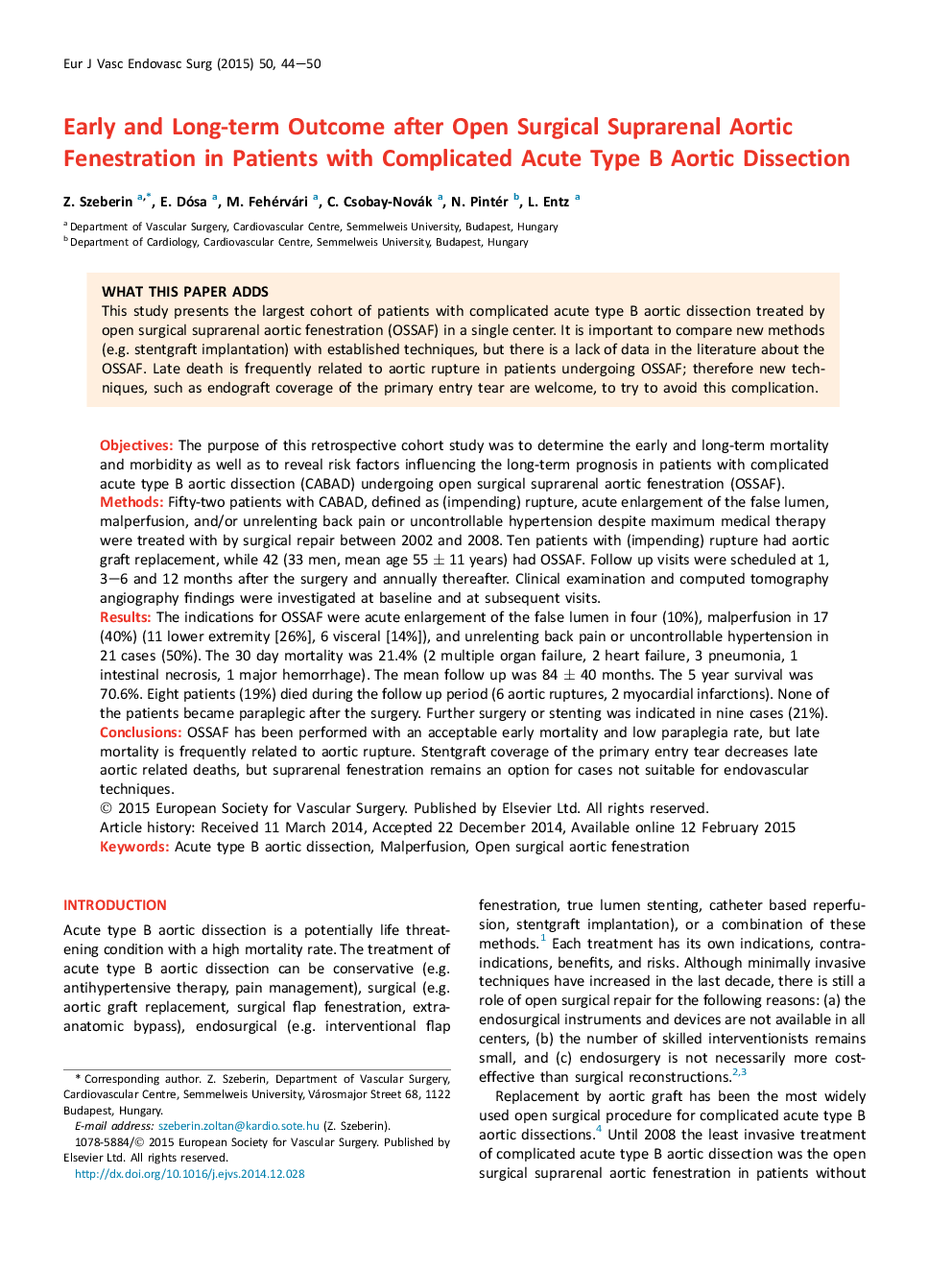| Article ID | Journal | Published Year | Pages | File Type |
|---|---|---|---|---|
| 2911882 | European Journal of Vascular and Endovascular Surgery | 2015 | 7 Pages |
ObjectivesThe purpose of this retrospective cohort study was to determine the early and long-term mortality and morbidity as well as to reveal risk factors influencing the long-term prognosis in patients with complicated acute type B aortic dissection (CABAD) undergoing open surgical suprarenal aortic fenestration (OSSAF).MethodsFifty-two patients with CABAD, defined as (impending) rupture, acute enlargement of the false lumen, malperfusion, and/or unrelenting back pain or uncontrollable hypertension despite maximum medical therapy were treated with by surgical repair between 2002 and 2008. Ten patients with (impending) rupture had aortic graft replacement, while 42 (33 men, mean age 55 ± 11 years) had OSSAF. Follow up visits were scheduled at 1, 3–6 and 12 months after the surgery and annually thereafter. Clinical examination and computed tomography angiography findings were investigated at baseline and at subsequent visits.ResultsThe indications for OSSAF were acute enlargement of the false lumen in four (10%), malperfusion in 17 (40%) (11 lower extremity [26%], 6 visceral [14%]), and unrelenting back pain or uncontrollable hypertension in 21 cases (50%). The 30 day mortality was 21.4% (2 multiple organ failure, 2 heart failure, 3 pneumonia, 1 intestinal necrosis, 1 major hemorrhage). The mean follow up was 84 ± 40 months. The 5 year survival was 70.6%. Eight patients (19%) died during the follow up period (6 aortic ruptures, 2 myocardial infarctions). None of the patients became paraplegic after the surgery. Further surgery or stenting was indicated in nine cases (21%).ConclusionsOSSAF has been performed with an acceptable early mortality and low paraplegia rate, but late mortality is frequently related to aortic rupture. Stentgraft coverage of the primary entry tear decreases late aortic related deaths, but suprarenal fenestration remains an option for cases not suitable for endovascular techniques.
